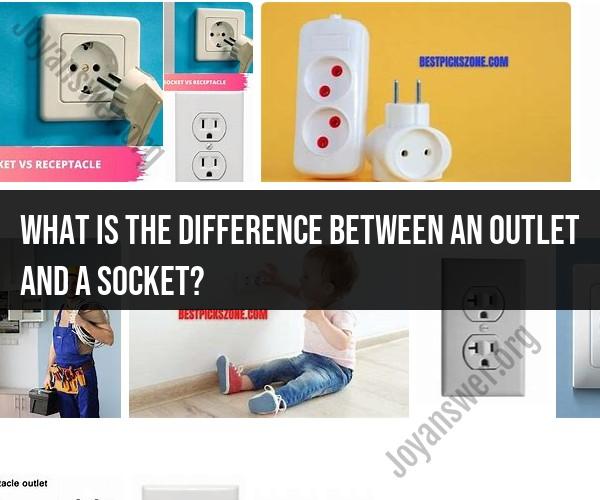What is the difference between an outlet and a socket?
In electrical terminology, the terms "outlet" and "socket" are often used interchangeably, but they can have slightly different meanings depending on the context and region. Here's an explanation of the difference between an outlet and a socket:
Outlet:
An outlet refers to the entire electrical device or receptacle that provides a point for connecting plugs from electrical devices. It typically consists of a faceplate, one or more socket openings, and the internal wiring that connects to the electrical system of a building. An outlet is the complete unit that includes the visible part on the wall or surface.
Common types of outlets include:
- Wall outlets: The standard electrical receptacles found on walls in homes and buildings.
- Floor outlets: Installed in the floor for convenience and aesthetics.
- GFCI outlets: Ground Fault Circuit Interrupter outlets designed to provide electrical safety by detecting ground faults and shutting off power.
- USB outlets: Outlets with built-in USB ports for charging devices.
Socket:
A socket, on the other hand, typically refers to the part of the outlet where you physically insert a plug. It is the receptacle or hole into which the prongs of a plug are inserted to establish an electrical connection. The socket is an essential component of the outlet.
In some regions, particularly in British English, "socket" is often used to describe the entire electrical receptacle, equivalent to what is commonly referred to as an "outlet" in American English.
To summarize, while "outlet" often refers to the entire electrical device on the wall or surface, "socket" specifically refers to the part where you insert the plug. The terminology can vary between regions and countries, so it's essential to understand the context when using these terms in discussions related to electrical systems. In casual conversation, the two terms are frequently used interchangeably, which can lead to some confusion.
Outlet vs. Socket: Understanding the Difference in Electrical Terminology
The terms "outlet" and "socket" are often used interchangeably when talking about electrical connections. However, there is a subtle difference between the two terms.
Outlet is a more general term that refers to the complete electrical connection, including the receptacle, socket, and plug. It is the opening in the wall where you plug in electrical cords.
Socket is a more specific term that refers to the female component of an electrical connection. It is the part of the outlet that the plug fits into.
To put it simply, an outlet is the complete electrical connection, while a socket is the female component of that connection.
Electrical Terminology Explained: Outlet vs. Socket Distinctions
Here is a table that summarizes the key differences between outlets and sockets:
| Term | Definition |
|---|---|
| Outlet | The complete electrical connection, including the receptacle, socket, and plug. |
| Socket | The female component of an electrical connection. The part of the outlet that the plug fits into. |
Power Connections Deciphered: Socket vs. Outlet Definitions
Here are some examples of how the terms "outlet" and "socket" are used in context:
- "I need to find an outlet to charge my phone."
- "The light bulb socket is burnt out."
- "The electrician installed a new outlet in the kitchen."
- "The plug doesn't fit into the socket."
In general, it is more accurate to use the term "outlet" when referring to the complete electrical connection, and the term "socket" when referring to the female component of that connection. However, it is also common to use the terms interchangeably, and most people will understand what you mean.












